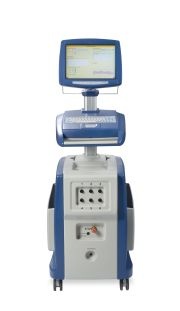New tumour ablation technique in clinical practice
Electroporation is going to widen the spectrum of cancer treatment in the future.
While other tumour ablation techniques like cyroablation, radiofrequency ablation and microwave ablation work with intense heat or cold to kill cancer cells, irreversible electroporation (IRE) uses electric pulses allowing minimal collatoral damage to surrounding tissue. First clinical applications have already been a success.

This month, clinicians at Rhode Island Hospital, Providence, USA, used IRE to treat a 70-year-old female, in the first IRE ablation of a kidney tumour in the US. The patient is reported to be doing well. The procedure was performed by Damian Dupuy, director of ablation services at Rhode Island Hospital.
Because IRE is minimally invasive, Dupuy says that the new technology can offer additional treatment options to patients who have no other alternatives or who have not responded to other forms of cancer treatment. The technique's minimally-invasive nature makes it an ideal choice for weak or elderly patients.
The device was first used in humans in April 2008, with five prostate-cancer patients treated in Florida as part of a pilot clinical trial. This first clinical application of IRE to ablate soft tissue was deemed "completely successful", based on analysis of biopsies performed two weeks after treatment.
IRE works by using electric pulses to permanently open microscopic pores in cell membranes. The cells in the targeted tissue then die within six hours of treatment, with little or no damage to surrounding healthy tissue such as nerves, blood vessels and other critical structures. The electrical pulses are delivered via a needle (or needles), making this a minimally invasive option.
One of IRE's novel advantages is that that the generated electrical field is not affected by the proximity of blood vessels. Heat-based ablation techniques, on the other hand, may be compromised in areas of excessive vascularization, as the flowing blood can transfer heat or cold away from the treatment site. Meanwhile, IRE's sparing of blood vessels and lymphatic systems surrounding the targeted site means that they remain to assist the body in removing the dead cells.
26.01.2009





